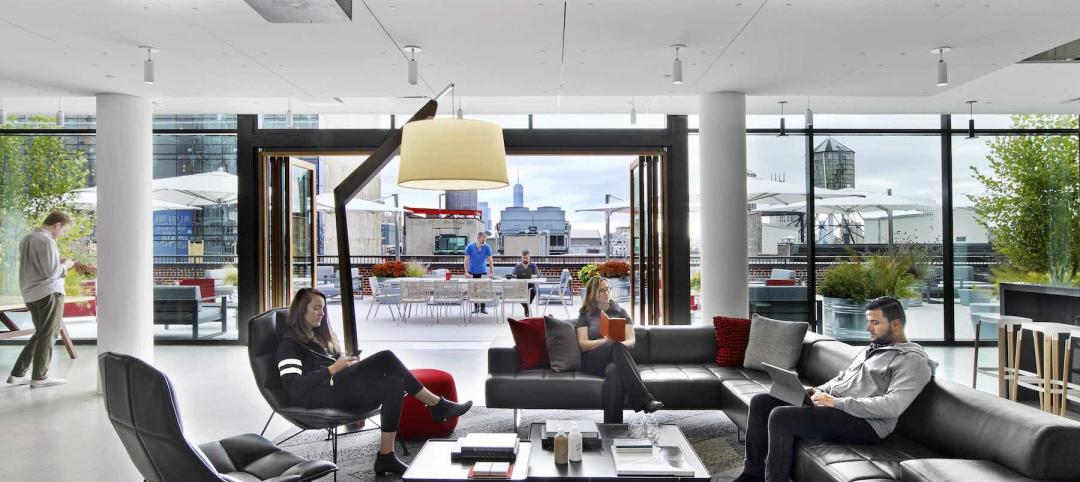Green jobs are now firmly established in the design and construction workforce, according to a new study released by McGraw-Hill Construction at the Greenbuild International Conference and Expo this week in Toronto. According to the study, 35% of architects, engineers and contractors (AEC) report having green jobs today, representing 661,000 jobs and one-third of the industry workforce. That share is expected to increase over the next three years, with 45% of all design and construction jobs being green by 2014.
“Green jobs are already an important part of the construction labor workforce, and signs are that they will become industry standard,” said Harvey Bernstein, vice president, Industry Insights and Alliances for McGraw-Hill Construction. “These numbers reported by the industry match our Dodge green building market sizing; so as green takes over construction activity, so too will green take over the construction workforce.”
The research also shows:
- AEC workers report green jobs on the rise at levels that match the McGraw-Hill Construction Dodge green building market sizing
- 35% of AEC firms focus on green jobs today, in line with the green building market share of 35% in 2010
- 45% of AEC firms expect to have green jobs by 2014, in line with the green building market share of 48%-50% by 2015
- Trades jobs (carpenters, HVAC/boilermakers, electricians, concrete/cement masons, and plumbers) are expected to see the greatest growth in green jobs; 15% of trades today are green jobs, and this is expected to increase to 25% in three years
- Green jobs yield advantages such as more opportunity (42%) and better career advancement (41%), according to respondents
- Training is essential for getting and maintaining green jobs; 30% of green job workers say they needed major training when they started, and most report that formal education and training programs will continue to be needed. Hiring firms agree; 71% of hiring decision makers maintain that being green-certified increases competitiveness.
This study is the first to focus exclusively on design and construction professionals and trades workers. “Green jobs” are defined as those involving more than 50% of work on green projects or designing and installing uniquely green systems, while excluding support or administrative professionals and manufacturing, production or transportation-related services. The premier partners include the U.S. Green Building Council and the American Institute of Architects. Other partners include the Society for Marketing Professional Services, National Association of the Remodelers Industry, and the Building & Construction Trades Department of the AFL/CIO. BD+C
Related Stories
| Aug 11, 2022
Report examines supposed conflict between good design and effective cost management
A report by the American Institute of Architects and the Associated General Contractors of America takes a look at the supposed conflict between good design and effective cost management, and why it causes friction between architects and contractors.
Architects | Aug 11, 2022
Mancini Duffy Bill Mandara on expanding through diversification
In this segment for HorizonTV, BD+C's John Caulfield interviews Mancini Duffy's CEO and Co-owner William Mandara about his firm's recent growth, which includes an acquisition and new HQs office.
Energy Efficiency | Aug 11, 2022
Commercial Energy Efficiency: Finally “In-the-Money!”
By now, many business leaders are out in front of policymakers on prioritizing the energy transition.
High-rise Construction | Aug 11, 2022
Saudi Arabia unveils plans for a one-building city stretching over 100 miles long
Saudi Arabia recently announced plans for an ambitious urban project called The Line—a one-building city in the desert that will stretch 170 kilometers (106 miles) long and only 200 meters (656 feet) wide.
| Aug 10, 2022
U.S. needs more than four million new apartments by 2035
Roughly 4.3 million new apartments will be necessary by 2035 to meet rising demand, according to research from the National Multifamily Housing Council (NMHC) and National Apartment Association.
| Aug 10, 2022
Gresham Smith Founder, Batey M. Gresham Jr., passes at Age 88
It is with deep sadness that Gresham Smith announces the passing of Batey M. Gresham Jr., AIA—one of the firm’s founders.
| Aug 9, 2022
Work-from-home trend could result in $500 billion of lost value in office real estate
Researchers find major changes in lease revenues, office occupancy, lease renewal rates.
| Aug 9, 2022
5 Lean principles of design-build
Simply put, lean is the practice of creating more value with fewer resources.
| Aug 9, 2022
Designing healthy learning environments
Studies confirm healthy environments can improve learning outcomes and student success.
Legislation | Aug 8, 2022
Inflation Reduction Act includes over $5 billion for low carbon procurement
The Inflation Reduction Act of 2022, recently passed by the U.S. Senate, sets aside over $5 billion for low carbon procurement in the built environment.

















